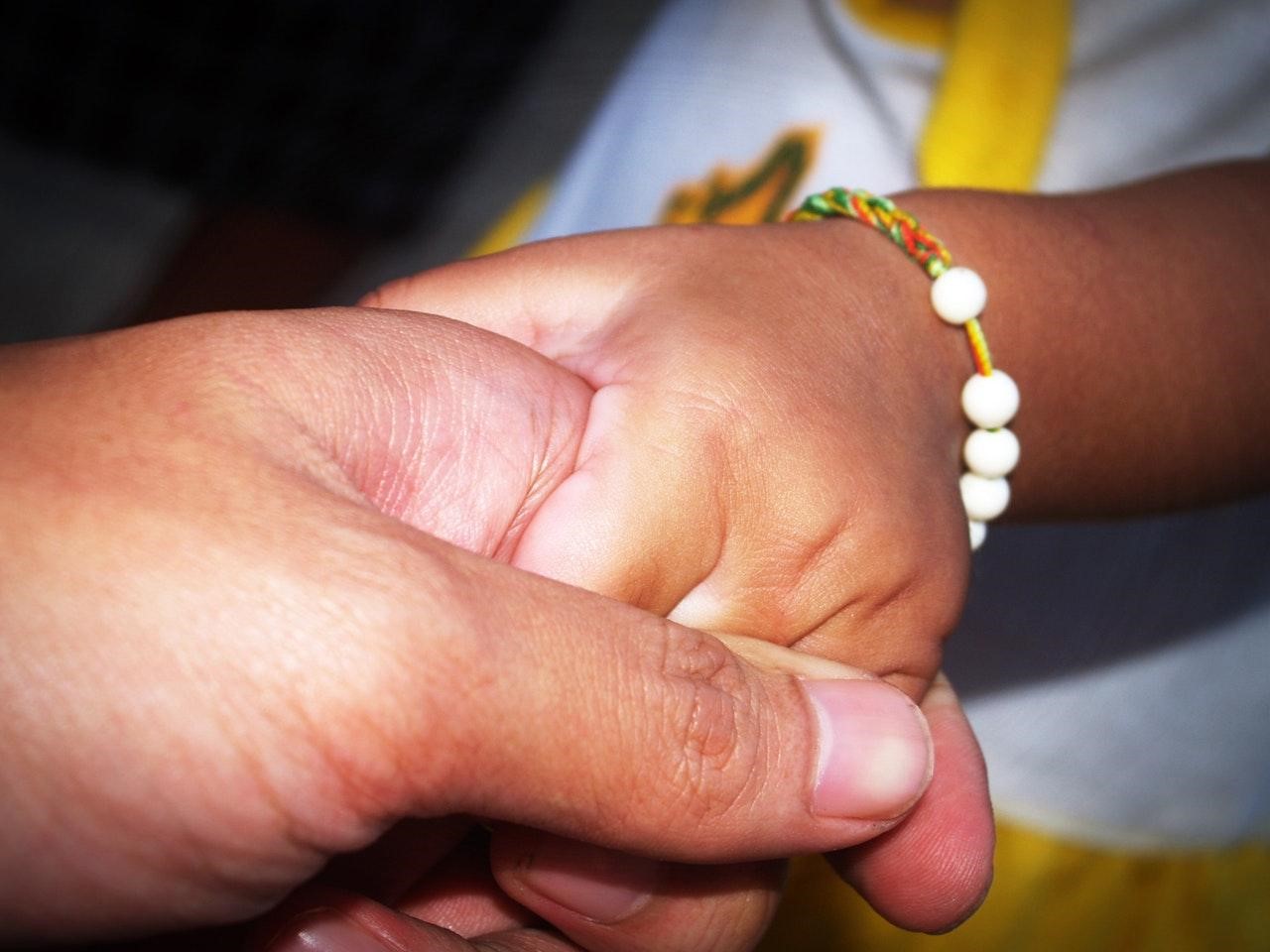Parenting
4 Blocks to Building a Lifelong Relationship with Your Daughter

As with every generation, mothers and daughters share a special bond. Though one is not quite a woman and one, in many ways, is still no longer a girl – they each bear the qualities of each other. Little girls want to grow up fast, and dear sweet moms want to regain their youth. Mothers also know how important it is to be a good role model for their daughters.
So, with the best of intentions, moms and daughters travel their journeys through life. It is every mother’s hope that their daughter grow to be strong, independent, caring, and giving. A mother’s dream is to enjoy the fruits of her labor (no pun intended). This means to know and see that her daughter is happy, confident, and kind to all. There are many detours and roadblocks along the way. But you can overcome them using these four building blocks. You will get and maintain a long-lasting relationship with your daughter. You’ll also earn a close and unique friendship with your daughter. This relationship will be passed onto her with her own children. What can be more important and rewarding than that? Not much, it ranks right up there at the top!
Life is based on building blocks. Relationships, too, are based on the same. Given the tools, you can build yours strong…strong to last the bumps in the road and the trials of life. A strong foundation provides anchors to weather any storm. It’s never too late to begin. Each new day comes renewal, forgiveness, and a positive step towards building it again.
BLOCK #1…TRUST.

Without trust, any relationship doesn’t stand a chance! Trust is often confused as “given”. A God-given right! As a loving mother, your daughter has grown to trust YOU. She knows you will pick her up when you say you will. She knows that she is cared for and provided for by YOU. Your daughter also knows your love is unconditional and that regardless of her doings, you’ll be there. She might get yelled at, but she TRUSTS you above all. Realize that YOU have earned her trust through words, credibility, and actions.
How about her perception of earning trust? Every young lady must understand that TRUST is earned. The same way YOU earned her trust in YOU! Ask yourself the reason behind the feeling that you need to accredit your children with things that should be earned. Our daughters need to understand that trust is patient. The small steps/small rewards process is a journey to gain their independence. They need to take responsibility when earning trust. If achieved, they need to guard it dearly, as one of the most valuable aspects of your shared relationship. Valuing this aspect will let your daughter know its worth.
There are five steps to establishing trust between a mother and a daughter. They include HONESTY; AWARENESS; FOLLOW UP; CONSEQUENCE; and finally, PRIVILEGE. Understanding these and knowing how to apply them in real life can achieve a loving bond.
BLOCK #2…COMMUNICATION.

Funny when our children are born, we seem so tuned in to their needs. We know the difference between a hungry cry and a mad cry. We can sense the slight mood change and worry for hours that there is a cold coming on. As our little girls grow up, we teach them to talk. We repeat sounds and clap for joy when they say “ball” and “Mama”. We’re elated to know that our little girls are on their way. We pay close attention to all their needs and kiss them softly and quietly goodnight.
Just because we teach language, it doesn’t mean that we teach communication. Communication, as defined by Webster, is an act of transmitting OR an exchange of information or opinions. The act of transmitting can mean giving orders, commands, and/or instructions. This, of course, is necessary at times. It means we mean what we say – and do it! No questions, no discussion. This form of communication is acceptable and appropriate. Its other definition, “an exchange of information” seems to be in a form of exploring another’s opinion, thoughts, and logic. This too is very important. The combination of these two is the foundation of effective communication.
When does it start? As our girls learn their words at the age of 2, they also begin to learn communication skills. These skills are mostly taught by our physical reactions and not our verbal capabilities.
Physical reactions involve the delivery of our words, the tone of our voices, and the actions of our bodies. It’s about logical reasoning and openness to understanding another human being. Since trust has been achieved, she’ll embrace your communication skills that support her best interests without threatening her own desires. You, as the parent, are in control at all times. YOU just need the tools to help educate your daughter on the ways of the world. With these, you’ll be creating a strong foundation of open-minded, free exchange of information without losing your position of authority. Remember communication can be a “two-way street” or a single command. Your choice, your control.
BLOCK #3…EFFECTIVE LISTENING.

Now that we have defined communication, I urge you to not spend too much time talking. Teach by actions as well! How? It’s easy…(once you understand how). Spend a lot of time listening!!! Effective listening provides an avenue showing insight into your daughter’s life. There is so much you can learn by listening and observing. Listening not only involves what your daughter says, it involves what others say too. This includes her friends, teachers, enemies and anyone she has contact with. I’m not suggesting you spy or have “reports back”. Just listen – you’ll learn more than you can imagine. Listening is a skill. Creating environments of opportunity is what you want to do.
Take carpools as an example. It is surely painful but when you pick up a bunch of her friends, keep the music to a soft level – don’t talk – just listen! The girls will continue with their chat and you’ll be able to interpret not only the quality of her friendships. You will also get to know the collective views of the group. This can be very valuable in future conversations you may have with your daughter. It’s also a great way to get to know her friends! Subtle suggestions from your side will have a better impact if you are more informed. Remember what you learned about communication.
BLOCK #4…LETTING GO.

Letting go is the ongoing process we all deal with. Know when to allow your daughter to find her way and to guide her. There will be times when she faces the pain of her consequences. It will definitely be painful as a mother, but we should know that we can’t always shield her from everything. If you look back on your own life – you’ll learn that essential life lessons were from tough situations. Whether it’s empathy and compassion for others, always know that we have a choice. We can choose to be “bitter or better”. It’s your call. In being there for your daughter, while letting go you provide the strength she’ll need to stand on her own. Through pain, we grow and through growth we become whole. Sometimes there are no words, sometimes silence and solidarity speak louder than any great speech. If you have built upon the three previous blocks, letting go will be a natural process of love. There is no fear where love dwells. Your goal is accomplished as soon as you form a strong and healthy relationship with your daughter.
Being there involves also mean being there as a friend, a parent, a role model, and a mother. Learning how to build and enjoy a mother/daughter relationship is the best gift you can pass on to your daughter. She can also pass it down to her children and future generations.
Enriching your bond with your daughter is one of the most valuable educations you can have. From her sweet little smile to her turbulent teens, you’ll be able to see her to be confident. Your reward is knowing that your job of parenting has now become the fruit of friendship.
You may like
Parenting
Strategies for Resolving Conflict with Your Children

Conflicts between parents and children have gone on since time began. As a child starts to learn how to talk, it seems they have likewise learned how to say ‘no.’ And they often say it often about everything from bedtime to eating their vegetables. What’s even more maddening is when they fight you on things you know they do want, like a trip to the park. It begins to seem as though children exist to be contrary.
Thankfully there’s help available. Below is a list of four strategies that will help you resolve conflicts with your child. What’s even more amazing is that these techniques work well whether you’re dealing with a toddler or a teenager.
- Don’t get sucked into the tension of the moment. Conflict with children quickly escalates. One demand becomes another until you’re so wrapped up in the whirlpool that you can no longer think or make a rational decision. At that moment you need to step back and take some time away. Take a deep breath and be calm. It might be time to let someone else watch the kids while you step outside and take a walk.
Walking away from a conflict with your child is something of an art. The last thing you want is for the child to think you’re not listening to what they have to say. But every argument reaches that point where no one is saying anything new. It’s about here that things start to get personal, and indeed uncomfortable. That is the point of taking a break. But even this takes skill. Excuse yourself quietly. It’s not the time for a dramatic exit. Whatever the case, you’re going to have to let your own emotions steady out before trying to help your child to calm theirs.
- Calm down. Clearing your head will help you to be both calmer and more rational. Once you’ve removed yourself from the situation, then take a few minutes for yourself. Breathe deeply. Practice mindfulness or even a lot of prayer until you’re in a better place and able to be in control of yourself. Find that inner peace.

- Become an active listener. When your child is upset about something, before assuming they’re wrong, ask them to explain why they’re upset. Then listen to their answer. Ask questions. Clarify. And then repeat back to them what you thought you heard them say. It might be that they have a legitimate concern. Or it might be they’ve misunderstood the situation completely. Either way, you’re now in a better position to help find a resolution to the situation.
- Practice empathy. Realize that there might be something more going on with your child than there appears to be on the surface. That will not only help you to calm down, but also might show you a possible solution, or at least a new way to address your child in a way that’s respectful and more compassionate. Keep in mind that your insights might well show you that the problem is with you.

Source: Pixabay - Empower your child. Allow them to make some of their own decisions. For example, rather than getting involved in a long fight over what to wear, allow your toddler to choose at least part of their outfit. It’s about learning how to pick your battles, saving the fights for the things that matter.
- Reconcile. Try apologizing. Recognize that it does take two people to get into an argument. Apologizing acknowledges the part that you’ve played in the situation and invites your child to do the same. This is a great way to teach your child how to resolve conflicts in a healthy way.
- Reconcile. Try apologizing. Recognize that it does take two people to get into an argument. Apologizing acknowledges the part that you’ve played in the situation and invites your child to do the same. This is a great way to teach your child how to resolve conflicts in a healthy way.

Source: Pixabay You don’t have to live in dread of a conflict with your child. Having conflict is inevitable. What you do need is to learn how to take back control when the conflicts happen. How you deal with conflict says a great deal about you as a parent.
Remember, it’s up to you to decide how you want to react to these situations. Being able to keep your cool in trying situations is an invaluable skill and one well worth cultivating, especially in parenting.
By staying calm and practicing these steps and you’ll soon find the road back to a peaceful resolution with your child, regardless of their age. And in the process teaching them the invaluable lesson of dealing with conflicts in a healthy way.
Parenting
So You Have A Picky Eater?


If you have a picky eater, mealtime can make you feel like you want to pull your hair out. It is frustrating for parents to watch their child only fiddle with their food at dinner or not even touch it, claiming they “don’t like it.” So what happens? Thirty minutes later guess who is hungry? You guessed it. Your little picky eater.
Jamie’s mother was concerned about Jamie’s lack of interest in food. She stated, “Jamie never wants to eat anything I fix for dinner. What can I do to encourage Jamie to eat the meals that I have prepared?” I came up with the following ten tips for her. You may find them useful as well.
TIP: INVOLVE JAMIE. You can have Jamie help with planning the menu or meal preparation. Kids are less likely to “turn up their nose” at something, they had a hand in.
TIP: PLACE A LIMIT ON JAMIE. Let’s think that Jamie is playing with her food at dinner and not really interested in eating it. Mom says, “Jamie, I will be serving breakfast at 7:00 a.m. try to eat enough to make it to then. You decide how much you will need. Oh! We will be clearing the table in _____ minutes.”
When Jamie comes to you later that evening complaining of being hungry. With an understanding tone, remind her that you will be serving breakfast at 7:00 a.m. as usual. Jamie will most likely be persistent about getting something else to eat. It is important that you follow through with the limit you have placed. Otherwise, Jamie learns that you do not mean what you say and you lose your credibility with her. You may have to tell her several times that you will be “serving breakfast at 7:00” until she realizes that you’re not going to give in.
Jamie: “Mom I’m hungry. Can I have some cookies?”
Mom: “Kids who eat all their dinner are welcome to have a snack after.”
Jamie: “But mom I’m really hungry.”
Mom: “I know Jamie. I would be hungry too if I ate as little as you did for dinner, but don’t worry I will be fixing a big breakfast at 7:00 a.m.”
Jamie: “What? Do you want me to starve?”
Mom: “I’ll be serving breakfast at 7:00 Jamie”
Jamie: “This isn’t fair.”
Mom: “I’ll be serving breakfast at 7:00 Jamie”
Jamie: “Fine!”
TIP: NOTICE THE EXCEPTIONS. Call attention to the times when Jamie eats most of her meals. “Wow! Jamie, you ate everything on your plate. Good job. You should be proud of yourself.” Too often, we only notice the negative aspects of our children’s behavior and that is what we reinforce with our negative attention.

TIP: CATER TO JAMIE’S DESIRE TO BE “BIG”. “ You won’t like this halibut, Jamie. Usually, adults are the only ones who like halibut.” Guess what may just become Jamie’s new favorite food?

TIP: PROVIDE VARIOUS CHOICES AROUND MEALTIME. “Would you rather sit by me or by mommy?” “You can eat with a fork or a spoon which would you prefer?” “Do you think you will need more potatoes or is that enough?” “Have as much as you think you will need to make it to dinner.” “Milk or juice?” “Should we eat at 7:00 or 7:30?”

TIP: BE A GOOD ROLE MODEL. “You know dear, although spaghetti is not my favorite, I will eat it because I know how hard you worked to make it.”

TIP: EXPOSURE. Encourage Jamie to try a variety of foods early on in her life before she knows anything different. Some children may have never thought eating liver was gross if it hadn’t been for what someone else had set their expectation to be.

TIP: PROVIDE SOME FLEXIBILITY. Let’s remember there are some foods that certain children can not stomach. If Jamie has a problem with spinach, but it is part of that particular meal, try to have other items. This way she can get her fill up on once everyone has their share. But, this should be the exception rather than the rule.
Try letting Jamie dip her food in sauces, dressings, syrups, and ketchup. It may make them taste better to her.

TIP: MAKE MEALTIME ENJOYABLE. Try to talk about things other than eating at mealtime. Dinner is a great time to talk to Jamie about how her day went. During breakfast, you can discuss what everyone has planned for the day.
Anyone pitching in to help prepare a meal can teach Jamie an important family value. An added bonus for children is that it can teach them important skills. It can be about thinking skills like timing, measuring, colors, comparisons, counting, and cause and effect.
Be creative in the ways that you dish up Jamie’s food. Mold her mashed potatoes into a volcano. Then, cut her meat or sandwich into bite-sized pieces. Poke toothpicks in them and layout veggies in the shapes of letters or numbers. You can also use a drop or two of food coloring to make it more interesting.

TIP: LIMIT SNACKING. For children to be hungry enough to eat a meal they usually need to go two or three hours without food. However, it is difficult for children to go from noon to 6:00 p.m. without food. A nutritious snack after school would be fine to get Jamie to dinner, still having her appetite.

TIP: RECALL PAST SUCCESSES. Think back to the times when Jamie had eaten her meals. What were you doing? Were you placing a lot of emphasis on her need to eat her food? What was she doing? What were you eating? What happened before the meal? These kinds of questions may help you realize some of the things you or Jamie is already doing which assist her in becoming a better eater.
Parenting
Six Ideas To Help You Discipline Your Kid


Got a kid? Love him or her? Of course, you do. So when he or she misbehaves on a consistent basis, what’s the best way to administer discipline?
Well, as you may be aware, there is a wide range of thoughts on this subject. One school of thought teaches hands-off to let the children figure it all out on their own. No punishment or reward systems. Another extreme says that the Singapore model of “canning” people for littering is a good one.
Most of us find ourselves between these two nutty positions. And the word “nutty” is being charitable. If you don’t think so, then stop reading. You’re a lost cause and should find yourself in a nice rubber room so that you don’t hurt yourself or anyone else.
Every child responds to anything in different ways. Some kids have a very high “pain” threshold. They can take whatever penalties you exact as they stubbornly refuse to do what they should do. There are others who can be easily motivated by various token systems.
So how do you find out what method of discipline will work for your kid(s)?
In a word: experiment! Here are six ideas for proceeding.
#1 – Put on your “scientist hat.”Research what’s out there. No author knows your kid better than you do. Many research studies can lead to various strategies for your kids. So knowing what’s been done before is a very good strategy in and of itself.
#2 – Once you know what you can do, you can now start interacting with your kid(s). Learn to differentiate discipline and abuse as we live in a reality wherein two can be seen as the same thing. So be careful as you try different discipline ideas.
Important note: Remember your main goal in doing these ideas. If you want to raise good and intelligent children, be patient to see if one thing applies to your children.
#3 – When you find something that seems to work, don’t think you can finally relax. Don’t confuse short term hits with long term success. Your child may be responding well to your discipline. But when it wears off, your child may very well revert to the old behaviors that you tried to change. The tough phase will last for more than a few weeks. So give things at least 3-6 weeks to see if the changes are enduring.
#4 – Tweak before you make major changes in your efforts. For example, suppose you are rewarding your kid(s) with pizza at the end of the week if they do something right. You assume that they’re responding to novelty rather than the measures themselves. Rather than junking the measures, tweak them a bit to determine if your suspicion is valid. For example, you might vary the food rewards. Say, “Look – if you do good things, you get to pick what we have for Friday dinner.” You might be on the right track and tweaking gives you a chance to really find out.
#5 – If tweaking doesn’t work, then, by all means, try new approaches.
#6 – Finally, be humble enough to know that you might need professional support. This can be in the form of a therapist or counselor. You’ve got to be careful here because these professionals have different competency levels on how to deal with your case. Some would suggest certain drugs as the initial therapeutic intervention for your child. You have the right to be skeptical in such situations. Listen to your own inner voice here. No matter how good the intentions are, many therapists simply get things wrong. If the one you’ve initially selected isn’t right for your child or your family, try another.
There are also organizations that can help you find a decent therapist that you need. America and many other nations are rich in resources to help families. Look into them if your problems grow too intense for you to handle on your own.
Finally, use common sense. It may sound strange but you’ll be the only one to make the final decision. Regardless of any professional help, books, or online forums that you encounter, you’ll be responsible for your child. Use the best intelligence you can and proceed with caution.

